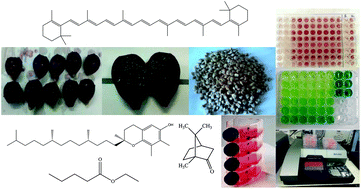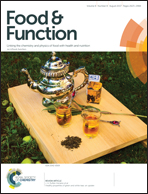Bioactivity and chemical characterization of Opuntia macrorhiza Engelm. seed oil: potential food and pharmaceutical applications
Abstract
In the food industry, there is a continuous search for ingredients that might provide advantageous properties to food products, either considering their nutritional value or bioactivity, as well as flavouring and technological aspects. Crude oils are good examples of this type of ingredient, especially if obtained from nonconventional sources. Accordingly, the Opuntia macrorhiza Engelm. seed oil (OMSO) was chemically characterized and evaluated for different in vitro and in vivo bioactivities. OMSO presented physicochemical characteristics appropriate to be considered as an edible oil, namely low acidity value, stability to oxidation (high peroxide value and low K232 and K270 values), and high contents of unsaturated fatty acids (as shown by the iodine value) and saponifiable matter. Furthermore, this natural oil, owing to its rich phytochemical profile, showed relevant antioxidant activity (especially in lipid peroxidation inhibition assays), α-glucosidase inhibitory activity, cytotoxicity against human tumour cell lines, antibacterial (mainly against Gram positive species) and antifungal properties, as well as anti-inflammatory and analgesic activities. Furthermore, OMSO did not show any sign of acute toxicity on animals, highlighting its possible use in different applications, considering that this natural product is not expected to induce the adverse effects typically associated with synthetic bioactive agents (e.g., ampicillin, amphotericin B, or lysine acetylsalicilate).



 Please wait while we load your content...
Please wait while we load your content...